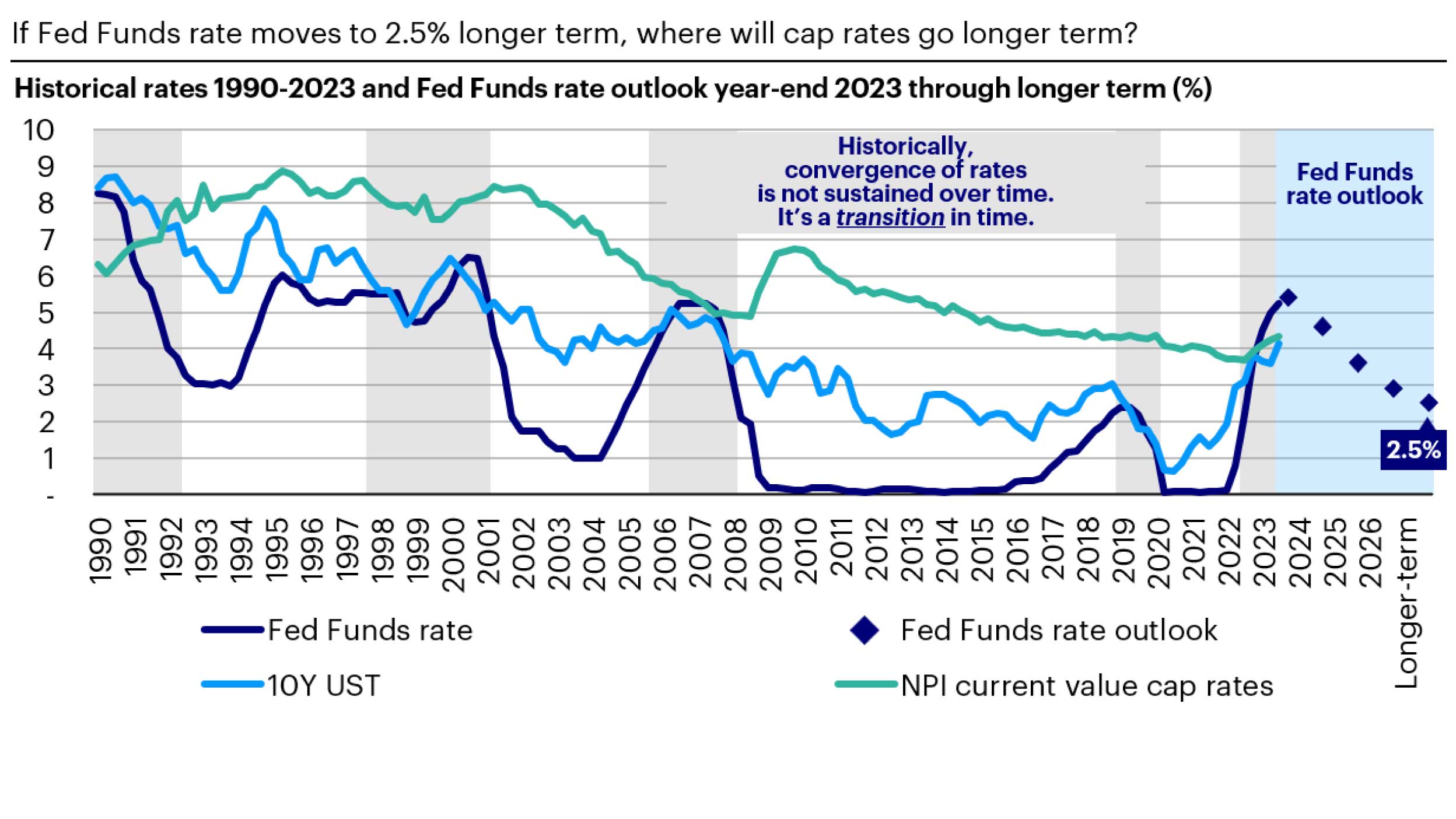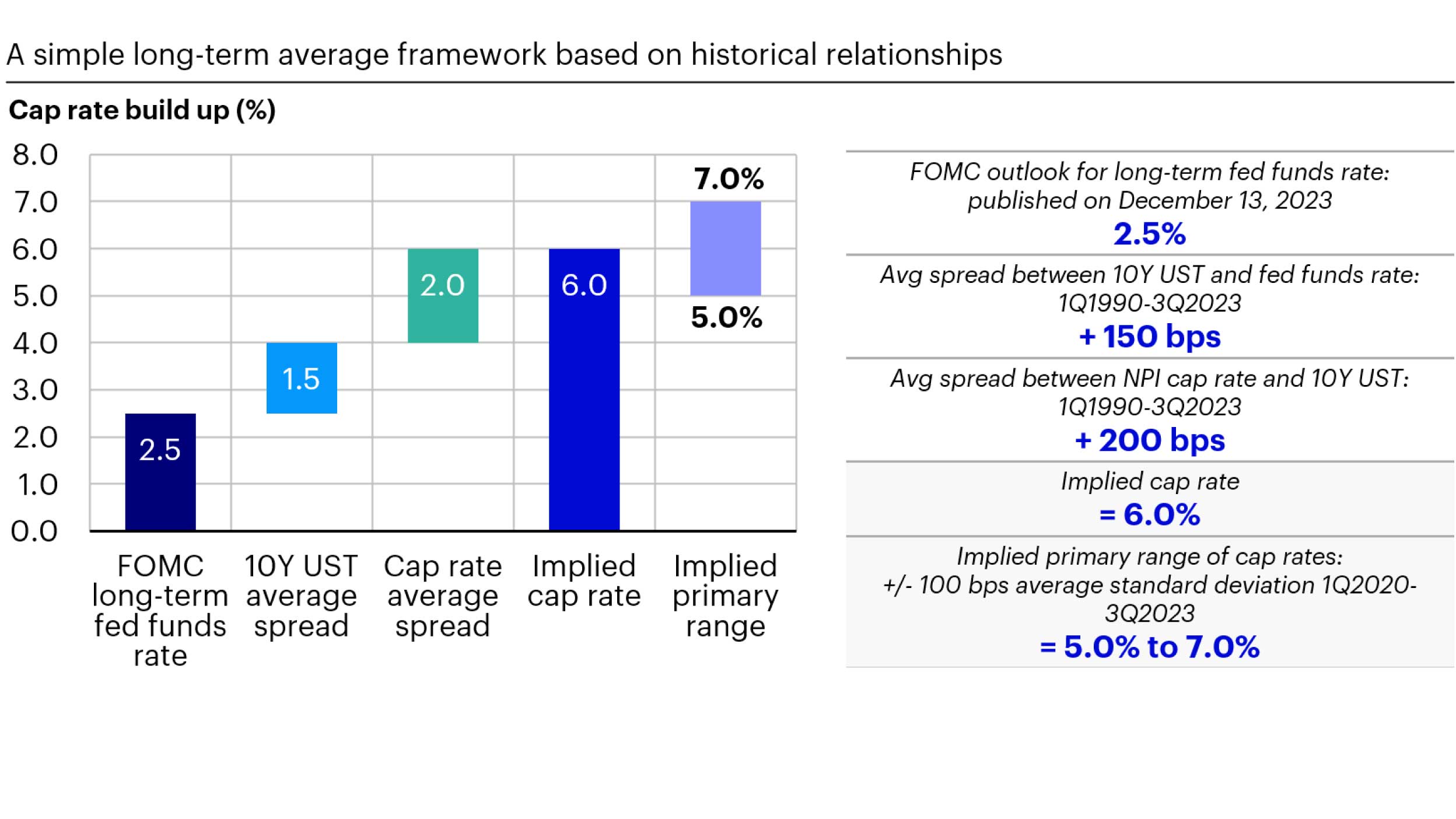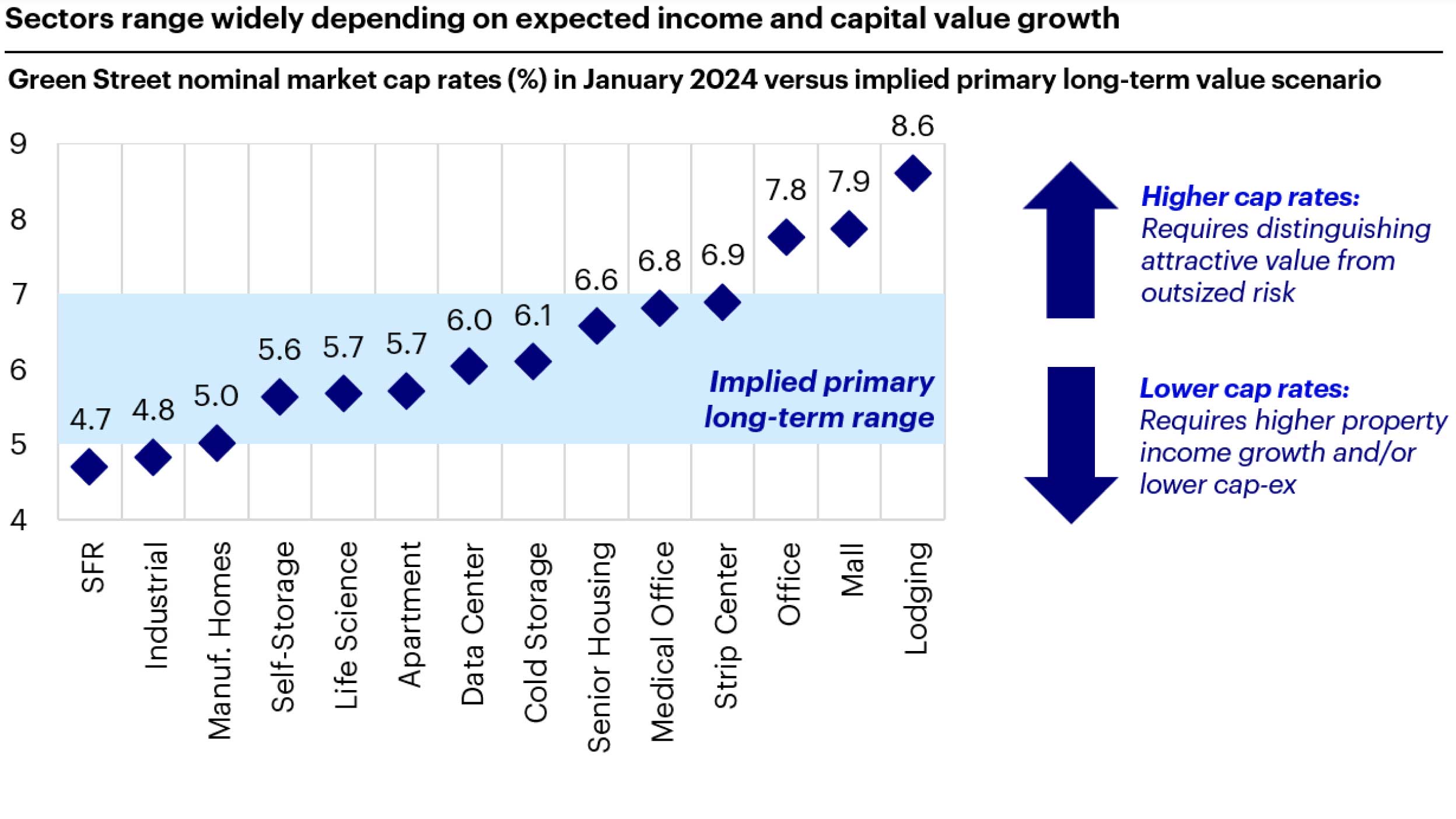Let's consider some interpretative rules-of-thumb and some observations:
Rules of thumb
- Sectors that post current cap rates on the lower end or below the primary long-term range would need to provide outsized growth of property incomes to justify a lower cap rate.
- Sectors that post current cap rates on the upper end or above the primary long-term range would need to be analysed to determine whether the higher cap rate represents attractive relative value or instead reflects a higher level of risk.
Observations
Overall: Of the 14 sectors shown on the chart, 9 sectors currently post cap rates within our assumed long-term primary range for all real estate, and cap rates for the other 5 sectors are outside the primary range.
Sectors within the range: Of those 9 sectors, 4 currently post cap rates below the 6.0% assumed long-term multi-sector average exit cap rate; 5 sectors currently post cap rates at or above the 6.0% long-term average.
Sectors above the range: Of the three sectors with cap rates above the primary long-term range, lodging has a volatile pattern of historical returns, and both malls and office are facing threats to long-run demand.
Sectors below the range: The two sectors with cap rates below the primary long-term range - industrial and single-family rentals - would need to provide outsized growth of property income to deliver returns that compete with or exceed the returns of sectors that are priced closer to the 6% multi-sector long-term average.
Conclusion
While a long-run view about real estate cap rates provides useful context for observing current cap rates, it's clear that additional information is required to make a holistic judgment about the appropriateness of current pricing per sector relative to long-term average values. Each sector must be evaluated for how tenant demand and future space supply are likely to influence property income growth. And sector cap rates must be adjusted to account for differences in capital expenditures.
That said, a long-run view about real estate cap rates provides the needed context for interpreting how current pricing, expected fundamentals, and capital spending relate to future investment returns. Like all investments, real estate investment decisions must consider multiple factors, and a long-run view about cap rates provides a foundation upon which to build all other investment assumptions.










